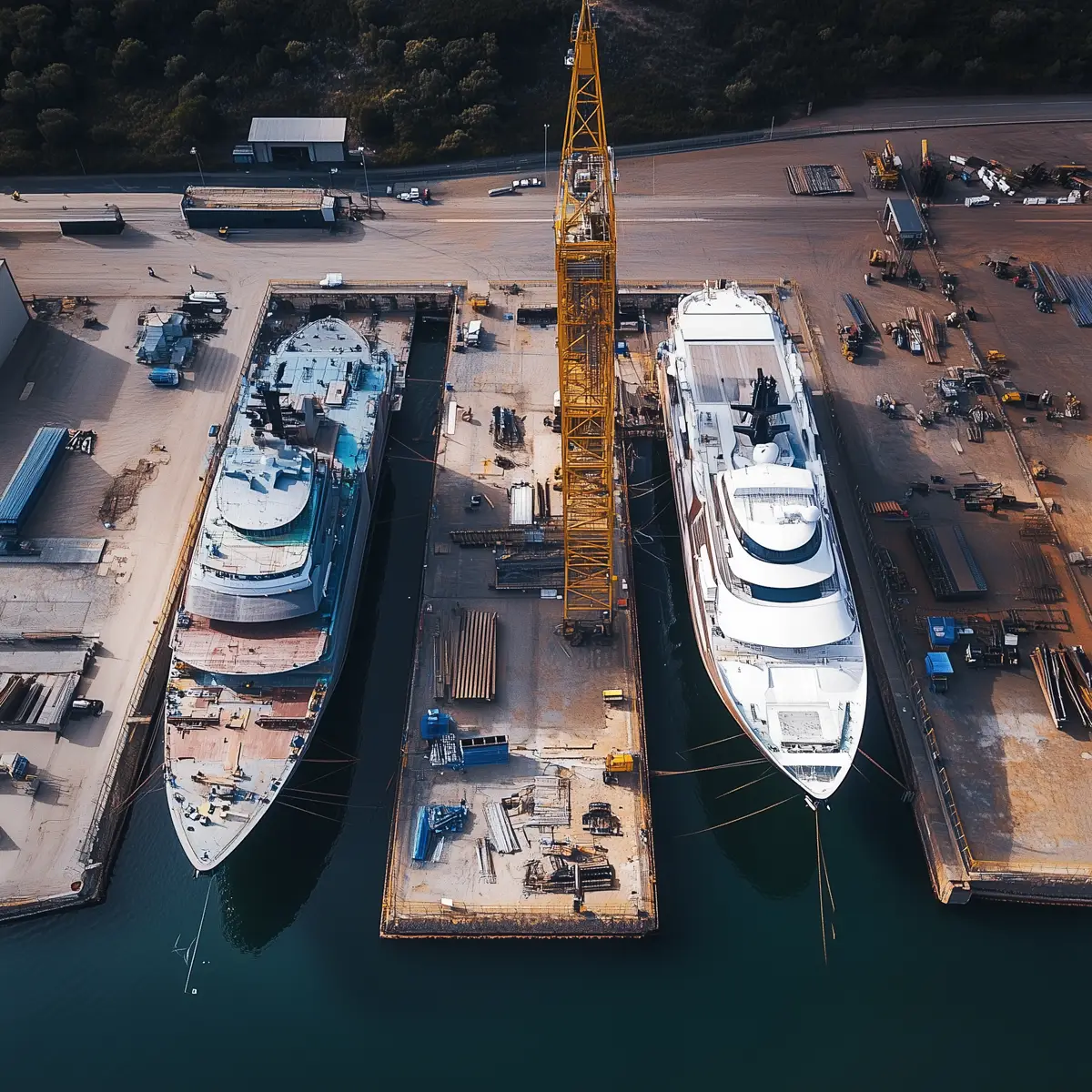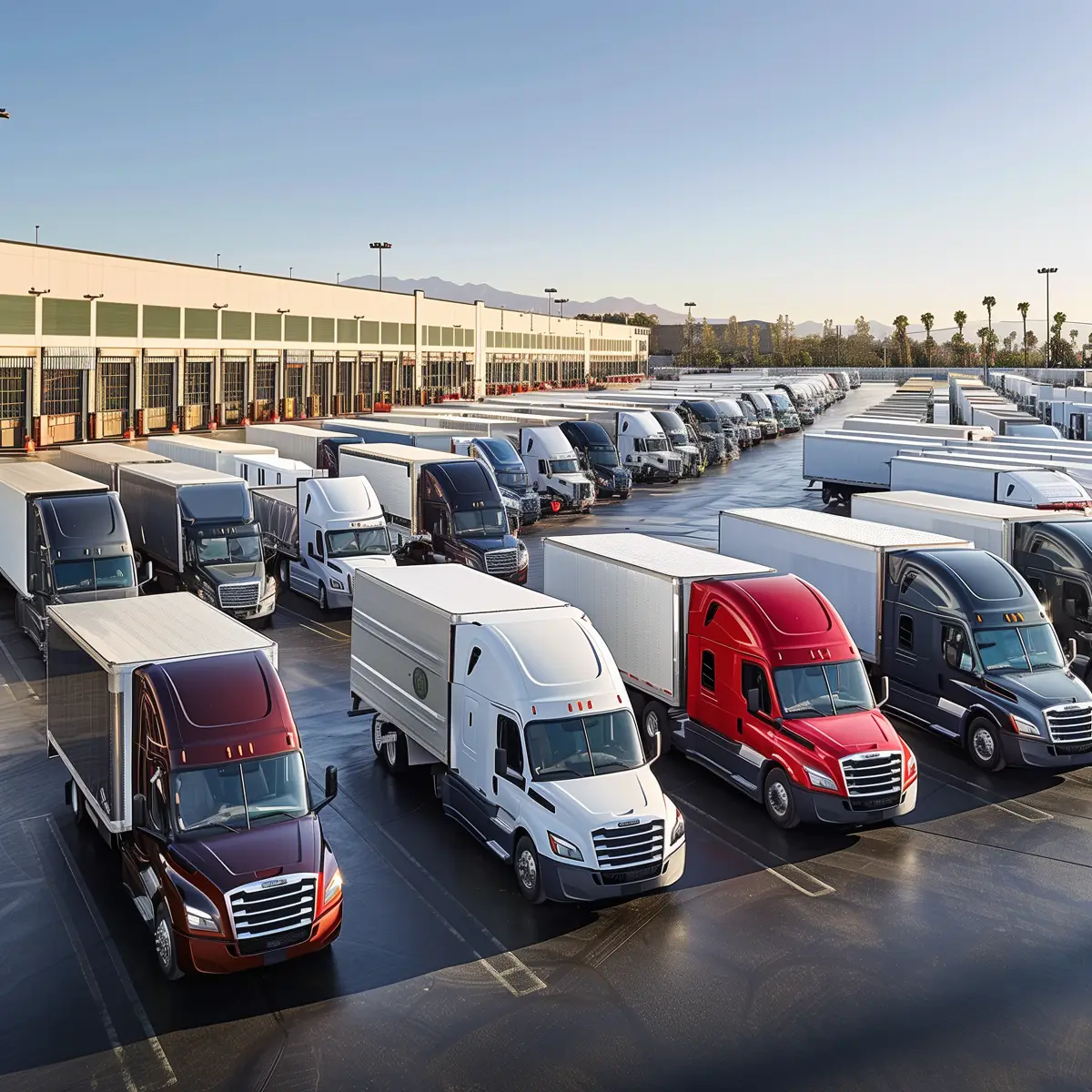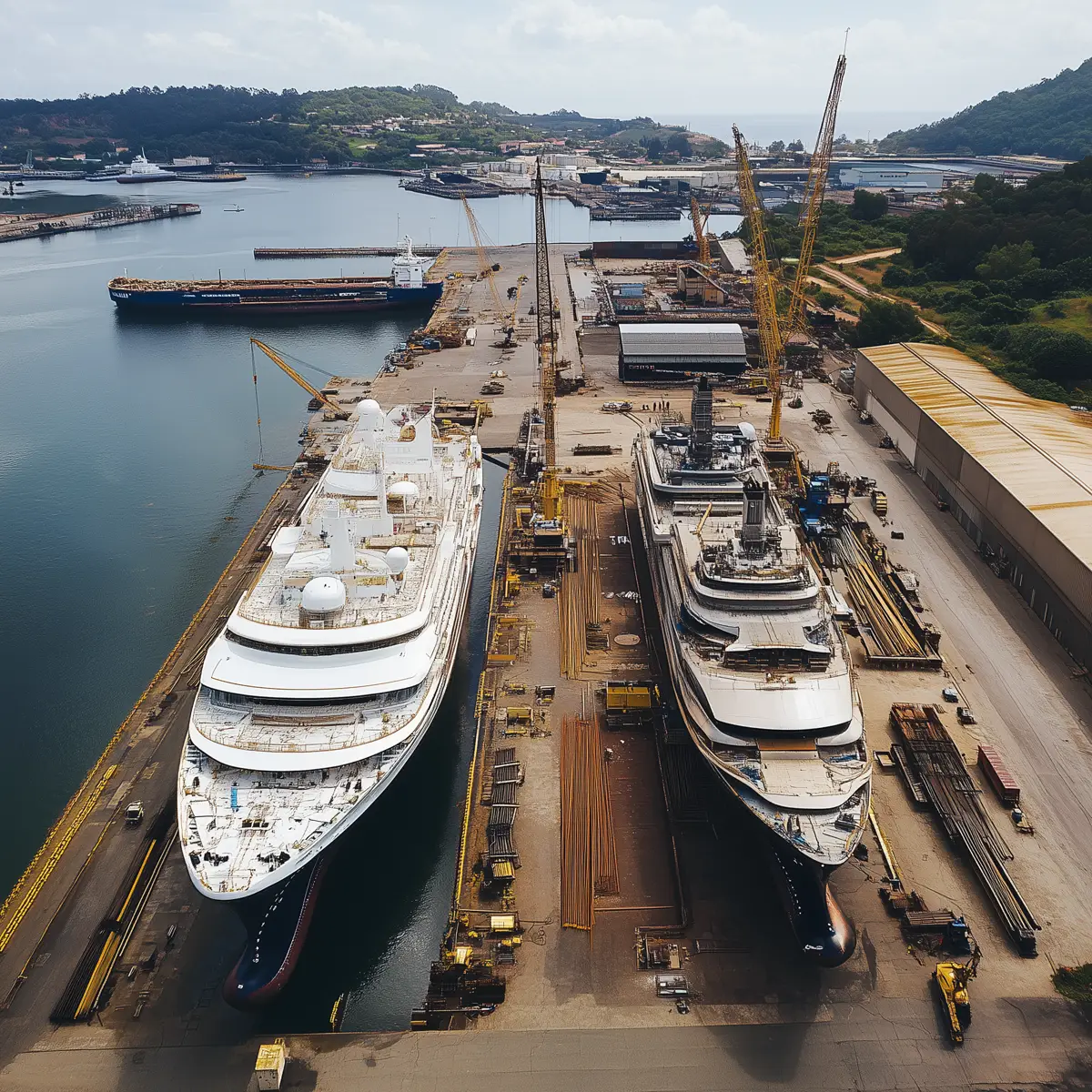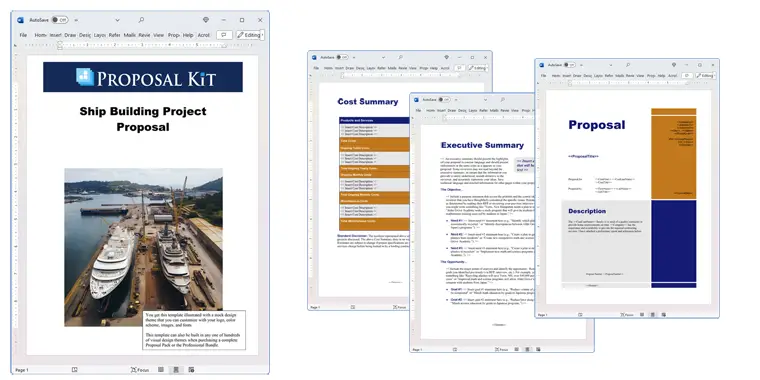How to write your Ship Building Project Proposal
We include this 28 page layout with every Proposal Pack. If you want this template to have a different visual design theme than the one illustrated here, purchase any Proposal Pack design and create this template using the purchased design theme. This template is included in every Proposal Pack. If you get a Proposal Pack or the Professional, you can also make any variation of this template with different chapters to suit your needs.
We typically include more chapters in the templates than most people will need to give everyone more variety in the chapters they may need. You can trim down a long template by removing pages you do not need or combining multiple chapter topics into one page.
 DOWNLOADABLE, ONE-TIME COST, NO SUBSCRIPTION FEES
DOWNLOADABLE, ONE-TIME COST, NO SUBSCRIPTION FEESYou can also create countless variations of this document to suit your needs using the included library of 2200+ chapters if ordering a Proposal Pack or Professional.
 What Our Clients Say
What Our Clients SayI have been using the proposal kit and wizard since 2009. The wizard has allowed me to automate and drive many of the steps which streamlines the process and orderly creation of proposals with good starting content. The software allows you focus on your business and instead of spending hours creating proposals. Their wizard guides you through the process which makes it less likely to forget anything."
Vice-President Marketing at Allgress
Related Article
Related Video
Related Templates
- Vessel Repair and Upgrade Project Proposal
- Equipment Maintenance and Repair Services Proposal
- Retrofit Project Proposal
- Fleet Management Proposal
- Steel Erection Project Proposal
- Transportation Shipping Services Proposal
- Equipment Leasing Proposal
- Equipment or Machinery Systems Upgrade Proposal
- Heavy Equipment Sales and Service Proposal
- Equipment Leasing and Service Proposal
- Site Safety Upgrades to Meet Regulations Proposal
- Vessel Repair and Modification Proposal Template
- Vessel Repair and Modification RFP Template
- Welding and Fabrication Services Proposal
- Machining Services Proposal
- Oil Tanker Business Proposal
- Petroleum Product Supply Proposal
What's the Best Way to Write Your Ship Building Project Proposal?
Using the Proposal Kit template library and Wizard software is a proven solution for writing a ship-building proposal. The software is designed to simplify the creation of these complex documents by offering customizable templates and incorporating a line item quoting database system. This system assists in creating detailed cost summaries, quotes, estimates, budgets, and other financial documents.
If you need to write such a proposal, whether for the design, prototyping, or construction of vessels, Proposal Kit is designed for you.
What Types of Projects Are Ship Building Project Proposals Written For?
Shipbuilding proposals are created for a variety of maritime projects. These proposals are important for outlining project specifics and securing contracts. Here are some examples of projects that typically require a proposal:
- Design and construction of new cargo ships
- Retrofitting existing vessels for environmental compliance
- Development of luxury yachts
- Building of naval defense ships
- Construction of passenger ferries
- Design of fishing trawlers
- Production of research vessels
- Development of oil tankers
- Construction of tugboats
- Assembly of cruise liners
- Building of patrol boats
- Design of offshore supply vessels
- Production of barges
- Creation of icebreakers
- Development of submarine support ships
- Construction of dredgers
- Design of hovercraft
- Development of high-speed ferries
- Building of marine research submarines
- Assembly of container ships
Chapters this template is built with
There is no one-size-fits-all template that works for every shipbuilding project proposal. However, the Proposal Kit software helps create custom variations from its extensive library of thousands of templates. Here are some key chapters you can use in your proposal:
Cover Letter
The Cover Letter sets the stage for your proposal, introducing your company and the purpose of the proposal. It is crucial to make a strong first impression. In a shipbuilding project proposal, the cover letter should convey your company's commitment to quality, efficiency, and innovation, outlining how these attributes will benefit the client's project.
Executive Summary
The Executive Summary provides a brief overview of the project, highlighting its primary objectives and benefits. This section should capture the reader's interest and explain why the project is worthwhile. In this context, it may describe the significance of the vessel fleet, such as enhancing maritime operations or boosting cargo capacity.
Cost Summary
A detailed Cost Summary is important for outlining the financial topics of the project. It includes estimates, quotes, and budget considerations, ensuring transparency and clarity. For a shipbuilding project, this section should break down costs related to materials, labor, design, and unforeseen expenses, providing a comprehensive financial plan.
Goals and Objectives
This chapter defines the project's specific goals and objectives, making it clear what the project aims to achieve. For shipbuilding, goals might include timelines for design finalization, construction milestones, and operational readiness dates, aligning with the client's initiatives.
Project Deliverables
Project Deliverables detail what the project will produce, providing a clear understanding of the expected outcomes and timelines. In a shipbuilding context, deliverables could include detailed ship designs, completed prototypes, or fully constructed vessels ready for deployment.
Milestones
Milestones outline significant points in the project timeline, helping track progress and ensure adherence to schedules. For shipbuilding projects, these could range from the completion of design phases to critical construction checkpoints and final inspection dates.
Prototyping
The Prototyping section discusses the development of initial models or prototypes, highlighting their importance in refining design and function. In shipbuilding, prototypes might be used to test new technologies or hull designs, ensuring the final product meets performance expectations.
Design
The Design chapter focuses on the project's engineering and aesthetic topics, ensuring all plans meet technical requirements and client expectations. This might involve detailing naval architectural plans, hull configurations, and interior layouts tailored to the client's specifications.
Materials Planning
This section details the materials required for the project, including sourcing and logistics considerations. For shipbuilding, it includes specifying steel quality, composite materials, and sustainable resources, ensuring they meet industry standards and project needs.
Production Schedule
The Production Schedule outlines the timeline for construction, assembly, and completion of the vessels. This is crucial in shipbuilding for coordinating tasks such as hull assembly, system installations, and sea trials.
Vessels
This chapter provides detailed information about the vessels included in the project, including specifications and intended use. In shipbuilding proposals, this might cover vessel dimensions, capacity, propulsion systems, and the operational roles they will fulfill.
Equipment
The Equipment section lists the machinery and technology necessary for the project, ensuring all tools are available and properly maintained. Shipbuilding requires a range of equipment from cranes for assembly to technology for precision fabrication.
Next Generation
Next Generation covers innovative technologies or methods used in the project, demonstrating a commitment to advancement and efficiency. This might include integration of eco-friendly propulsion systems or state-of-the-art navigation technology in new ship designs.
Evaluation
Evaluation includes the criteria and methods used to assess the project's success and adherence to objectives. In shipbuilding, this could involve performance benchmarks during sea trials and compliance with maritime regulations.
Specifications
The Specifications chapter provides detailed technical information about the ships, ensuring all stakeholders understand the project's requirements. This includes dimensions, displacement, speed, and capacity, key topics in shipbuilding.
Requirements
This section outlines the necessary conditions and standards that must be met throughout the project. These might include compliance with international maritime safety standards and environmental regulations in shipbuilding proposals.
Acceptance Criteria
Acceptance Criteria define the conditions under which the project deliverables will be accepted, ensuring client satisfaction. In shipbuilding, acceptance might be based on successful navigation trials and adherence to design specifications.
Budget
A comprehensive Budget outlines the financial resources required, providing a clear picture of the project's economic feasibility. This involves detailed financial planning for shipbuilding costs such as labor, materials, and subcontracting expenses.
Payment Schedule
The Payment Schedule details the agreed-upon terms for payments, ensuring clarity and agreement between parties. In shipbuilding projects, it might align payments with milestone completions, ensuring financial stability throughout the project.
Capabilities
Capabilities highlight the skills and expertise your company brings to the project, reinforcing confidence in your ability to deliver. This could involve showcasing previous shipbuilding successes and the technical expertise of your team.
Company History
Company History provides background information about your organization, building trust and credibility with the client. For shipbuilding, this might include previous projects, industry recognition, and a proven track record of innovation.
Logistics
Logistics cover the coordination and management of resources, ensuring smooth project execution. This is critical in shipbuilding for managing the supply chain and coordinating between design and construction teams.
Facilities
Facilities describe the physical locations and infrastructure used in the project, showcasing readiness and capacity. For shipbuilding, this includes shipyards, dry docks, and fabrication workshops equipped to handle complex vessel construction.
Company Operations
Company Operations detail how your organization functions and supports the project, emphasizing efficiency and reliability. This might include streamlined processes in design, procurement, and construction phases of shipbuilding.
Personnel
The Personnel section introduces the key team members involved in the project, highlighting their experience and qualifications. In shipbuilding, this could feature naval architects, engineers, and project managers skilled in managing maritime projects.
Use cases for this template
Navigating the Complexities of Defense Contracts
The Challenge
Jordan, a project manager at MarineTech Solutions, was facing one of the most challenging tasks of his career: securing a government contract for building naval defense ships. This project was crucial for the company's growth and necessitated a highly detailed proposal that included intricate technical specifications and a competitive cost analysis. The complexity of the project meant that any oversight could cost the company dearly, both financially and reputationally.
The Solution
Jordan knew he needed a robust solution to tackle this formidable challenge, so he turned to Proposal Kit. The software's extensive library of templates offered him the flexibility to create a proposal tailored to the specific requirements of the defense project. The customization options provided by the software meant that Jordan could focus on the unique topics of the proposal without sacrificing structure and comprehensiveness.
The Implementation
With Proposal Kit at his disposal, Jordan was able to efficiently construct key sections of the proposal, such as cost summaries, technical specifications, and project deliverables. The quoting database system proved invaluable in handling the financial documentation, ensuring that every detail was accurate and clearly presented. This not only saved Jordan time but also enhanced the proposal's credibility by demonstrating a thorough understanding of the financial and technical demands of the project.
The Outcome
Thanks to the professionalism and attention to detail captured in the proposal, MarineTech Solutions secured the government contract. The proposal highlighted the company's ability to meet stringent requirements and deliver quality outcomes, strengthening their reputation as leaders in the industry. Jordan's adept use of Proposal Kit showcased MarineTech's capabilities and reliability, cementing their position as a preferred partner for future projects.
Beating Tight Deadlines in Environmental Compliance Projects
The Challenge
Alyssa, an engineer with Shipwright Innovations, found herself under pressure when she received an urgent task: write a proposal for an internal project to retrofit existing vessels in compliance with new environmental regulations. The deadline was tight, and the complexity of the project required a comprehensive document that addressed numerous technical, logistical, and regulatory considerations.
The Solution
Realizing the magnitude of the task, Alyssa decided to use Proposal Kit to streamline the proposal writing process. To further enhance efficiency, she incorporated an AI writing tool. This combination allowed her to create specific sections quickly and accurately, ensuring the proposal met all necessary standards without compromising on quality.
The Implementation
By using the AI tool, Alyssa prompted it to analyze Shipwright Innovations' website, ensuring the proposal content was coherent with the company's existing projects and goals. She generated detailed chapters on goals and objectives, materials planning, and logistics. Proposal Kit provided the necessary structure and format, which allowed Alyssa to focus her efforts on the technical nuances and alignment of the proposal.
The Outcome
Alyssa successfully met her deadline and delivered a polished proposal that exceeded expectations. Her ability to combine the powerful features of Proposal Kit with the AI tool meant she could maintain a high level of technical accuracy, which impressed her supervisors and colleagues alike. The project moved forward smoothly, showcasing Alyssa's capability to handle complex challenges under pressure.
Attracting Top Designers for a Sustainable Yacht Project
The Challenge
Leo, a director at SeaChange Foundation, faced the task of writing a Request for Proposal (RFP) for an innovative yacht design project. The foundation aimed to emphasize sustainability and integrate cutting-edge technology, making the project highly appealing yet demanding in its requirements for clarity and precision in communication.
The Solution
To tackle this task, Leo turned to Proposal Kit. The comprehensive templates available in the software allowed him to create a detailed RFP that addressed the foundation's specific needs. The ability to customize the templates meant Leo could align the document with the foundation's sustainability goals, ensuring the RFP clearly communicated the vision and scope of the project.
The Implementation
Leo used Proposal Kit to create sections that highlighted design requirements, next-generation technologies, and evaluation criteria. The software ensured that the RFP was comprehensive, aligning with industry standards while also capturing the unique objectives of the project. The clarity and detail in the RFP made it accessible to potential bidders, emphasizing the foundation's commitment to sustainability and innovation.
The Outcome
SeaChange Foundation received numerous high-quality bids from top designers around the world. Leo's use of Proposal Kit facilitated the creation of an RFP that communicated the project's expectations, attracting innovative responses that aligned with the foundation's goals. The quality and clarity of the RFP not only attracted the right partners but also set a benchmark for future projects within the organization.
Conclusions and Recommendations
Navigating the complexities of writing a shipbuilding proposal can be simplified with the use of Proposal Kit. The product's tailored templates and software facilitate the creation of detailed and professional project documents. By addressing each project's unique needs, Proposal Kit provides the tools necessary to produce winning proposals, whether for a defense contract, internal project, or innovative RFP.
Also Known As
This template may also be referred to in different ways or be used in more specialized situations, such as:
- Maritime Construction Proposal
- Vessel Design Proposal
- Fleet Development Proposal
- Shipyard Project Proposal
- Naval Project Proposal
- Marine Engineering Proposal
- Yacht Construction Proposal
- Boat Building Proposal
- Vessel Prototyping Proposal
- Nautical Project Proposal
Abstract
 A strong shipbuilding industrial base is important for national security, commerce, and transportation, driving demand for more ships by the Coast Guard, navy, and related agencies. Recent congressional research service reports highlight the role of Congress, lawmakers, and the Senate committee in shaping the direction and funding of shipbuilding programs through legislation, appropriations, and reform. Departments such as Homeland Security and the Navy must implement efficient solutions to meet requirements in less time, often in response to new laws or guidance announced by the administration or president. The connection between the shipbuilding sector and government agencies is reinforced each time data and accounts are submitted in the fall or December for budget planning or in March and November when project updates are distributed or funding cycles begin.
A strong shipbuilding industrial base is important for national security, commerce, and transportation, driving demand for more ships by the Coast Guard, navy, and related agencies. Recent congressional research service reports highlight the role of Congress, lawmakers, and the Senate committee in shaping the direction and funding of shipbuilding programs through legislation, appropriations, and reform. Departments such as Homeland Security and the Navy must implement efficient solutions to meet requirements in less time, often in response to new laws or guidance announced by the administration or president. The connection between the shipbuilding sector and government agencies is reinforced each time data and accounts are submitted in the fall or December for budget planning or in March and November when project updates are distributed or funding cycles begin.
To comply with security and environmental standards, shipbuilding projects often require the development of advanced platforms and the integration of science and next-generation technology. Errors or being unable to meet specifications can delay vessel delivery, impacting both defense capabilities and commercial fleets. The secretary of relevant departments oversees the fund allocation to shipyards and ensures that projects are on track, while congressional committees search for opportunities to strengthen the industrial base and ensure legislative compliance.
High-quality shipbuilding proposals must address technical details, budget justifications, and legislative mandates, reflecting the complex requirements lawmakers and agencies expect. These proposals are built upon a platform of thorough data analysis, clear milestones, and robust evaluation criteria, ensuring funds are used efficiently, and outcomes align with national policy. With increasing scrutiny and limited money available, successful proposals must demonstrate the ability to deliver more ships in less time without error, supporting the United States' position in global maritime commerce and security.
 The creation of comprehensive shipbuilding project proposals plays an important role in shaping the future of the maritime sector and ensuring compliance with congressional research service recommendations, security mandates, and department priorities. The process is influenced by legislation, such as new laws and appropriations determined by Congress and the Senate committee, which direct how resources and money are distributed across shipyards and vessel programs. Lawmakers emphasize robust oversight to guarantee that each submitted proposal accounts for cost efficiency, timely delivery, and adherence to homeland security requirements.
The creation of comprehensive shipbuilding project proposals plays an important role in shaping the future of the maritime sector and ensuring compliance with congressional research service recommendations, security mandates, and department priorities. The process is influenced by legislation, such as new laws and appropriations determined by Congress and the Senate committee, which direct how resources and money are distributed across shipyards and vessel programs. Lawmakers emphasize robust oversight to guarantee that each submitted proposal accounts for cost efficiency, timely delivery, and adherence to homeland security requirements.
For companies and organizations navigating complex government or commercial shipbuilding contracts, Proposal Kit provides a practical solution for assembling intricate project documents. Its extensive content libraries and automated line-item quoting features enable users to construct detailed financial accounts, technical specifications, and milestone schedules, ensuring the resulting proposals align with both legal and operational standards. By reducing the time and effort required to comply with multifaceted regulations and reform measures, the Proposal Kit allows shipbuilders and stakeholders to focus on the core science and engineering challenges unique to each project.
High-quality proposals created with these tools support decision-making at the department and administration level, facilitating the secure and efficient expansion of naval and Coast Guard fleets. The process of submitting data and proposals in March, November, or December ensures ongoing communication and alignment with government priorities, whether responding to a call for more ships or addressing platform upgrades for security and environmental compliance. As shipbuilding projects grow in complexity and scrutiny, the ability to deliver a proposal that meets rigorous requirements withstands legislative review and demonstrates value to commerce and transportation networks is more important than ever. These proposals not only secure funding but also strengthen the connection between the shipbuilding industrial base and the national interests they serve.
 In addition to supporting compliance and regulatory demands, shipbuilding proposals influence long-term economic growth and technological advancement within the industry. The shipbuilding industrial base depends on a stable flow of contracts and appropriations, which are often determined by robust proposals that anticipate future needs and respond proactively to the direction set by Congress and the secretary of relevant departments. Quality proposals not only secure funding but also foster innovation by encouraging investment in next-generation science, sustainable materials, and advanced platforms that improve both security and operational efficiency.
In addition to supporting compliance and regulatory demands, shipbuilding proposals influence long-term economic growth and technological advancement within the industry. The shipbuilding industrial base depends on a stable flow of contracts and appropriations, which are often determined by robust proposals that anticipate future needs and respond proactively to the direction set by Congress and the secretary of relevant departments. Quality proposals not only secure funding but also foster innovation by encouraging investment in next-generation science, sustainable materials, and advanced platforms that improve both security and operational efficiency.
The process of preparing these documents also enhances collaboration between stakeholders, including shipyards, engineering teams, and government agencies. By clearly defining project deliverables, evaluation criteria, and payment schedules, proposals create a clear account of how resources will be used and how progress will be measured over time. This transparency is vital for building trust with lawmakers and for ensuring that funds are distributed appropriately, with minimal risk of error or mismanagement.
Proposal Kit's structured approach helps organizations comply with the complex layers of legislation and administrative requirements that often change after key announcements or reforms in March, November, or during the fall. The software's ease of use allows even teams new to government contracting to quickly assemble documents that address both technical and financial expectations, reducing the risk of proposals being rejected as unable to meet standards.
 At a broader level, the ability to create effective shipbuilding proposals contributes to national readiness, supports the department's missions for homeland security and the navy, and underpins the secure movement of goods and people in global commerce. As the industry faces increased pressure to deliver more ships in less time and at lower cost, well-written proposals become important tools in maintaining the nation's maritime strength and ensuring that legislation and appropriations translate into tangible results for transportation and security.
At a broader level, the ability to create effective shipbuilding proposals contributes to national readiness, supports the department's missions for homeland security and the navy, and underpins the secure movement of goods and people in global commerce. As the industry faces increased pressure to deliver more ships in less time and at lower cost, well-written proposals become important tools in maintaining the nation's maritime strength and ensuring that legislation and appropriations translate into tangible results for transportation and security.
Frequently Asked Questions
What are the important components of a shipbuilding project proposal?
A shipbuilding project proposal must comprehensively outline the project's objectives, specifications, and financial topics. Key components typically include an executive summary, cost summary, project deliverables, and a detailed timeline. The Proposal Kit offers customizable templates that guide you through each section, ensuring you address critical topics such as material planning, equipment requirements, and production schedules. These components help convey a clear picture of the project's scope and feasibility to potential stakeholders.
How can I make my shipbuilding proposal stand out to clients?
To make your shipbuilding proposal stand out, focus on clarity, professionalism, and attention to detail. Use Proposal Kit's tools to customize your proposal, highlighting unique topics of your project, such as innovative technologies or sustainability initiatives. Including detailed sections on your company's history, capabilities, and personnel adds credibility and builds confidence in your ability to deliver the project successfully. A well-structured, visually appealing document can capture the attention of decision-makers and set your proposal apart from competitors.
What should be considered when estimating the budget for a shipbuilding project proposal?
Estimating the budget for a shipbuilding project proposal involves careful consideration of various factors, including materials, labor, equipment, and logistics. It's crucial to provide accurate and realistic cost estimates to reflect the project's true financial requirements. Proposal Kit's line item quoting database can help organize and present these estimates clearly. Additionally, consider potential risks and contingencies to ensure your budget remains feasible even in unforeseen circumstances. A well-prepared budget instills confidence in your project management skills.
How do I address technical specifications and requirements in a shipbuilding project proposal?
Addressing technical specifications and requirements is an important part of a shipbuilding project proposal. This section should detail the engineering and design topics of the vessels, including dimensions, materials, and safety standards. Using Proposal Kit's templates allows you to structure this information methodically, ensuring all technical details are covered comprehensively. Collaborate with technical experts on your team to verify accuracy and completeness, as this adds credibility and demonstrates your commitment to meeting industry standards.
How can I communicate project deliverables and timelines in my proposal?
To communicate project deliverables and timelines, use clear and concise language supported by visual aids like charts or diagrams. Proposal Kit enables you to create a structured layout for these sections, making it easier to convey the sequence of project phases and key milestones. Define each deliverable's specifics and the corresponding completion dates, ensuring stakeholders understand what to expect and when. This clarity helps manage expectations and facilitates clear communication throughout the project's duration.
20% Off Discount
![]() Add To Cart This Word Template
Add To Cart This Word Template
 Add To Cart Proposal Pack for Any Business
Add To Cart Proposal Pack for Any Business
 Add To Cart Proposal Kit Professional
Add To Cart Proposal Kit Professional
 4.7 stars, based on 849 reviews
4.7 stars, based on 849 reviewsProposal Kit chapters used in this template
Cover Letter, Title Page, Table of Contents, Executive Summary, Goals and Objectives, Next Generation, Vessels, Equipment, Design, Specifications, Requirements, Materials Planning, Prototyping, Logistics, Facilities, Personnel, Production Schedule, Project Deliverables, Milestones, Cost Summary, Budget, Payment Schedule, Evaluation, Acceptance Criteria, Company History, Capabilities, Company Operations, Back Page
Line Item Automated Chapters
If you purchase a Proposal Pack or the Professional Bundle, these proposal pages are generated using an automated line-item database in the included Wizard software.
Cost Summary, Production Schedule, Budget Three Year
You use this proposal for
- General business proposal
- Technical proposal
- Project pitch proposal
- RFP response
- Construction, contracting, building proposal
- Manufacturing, engineering, fabrication proposal
How to create this template with Proposal Pack Wizard
You can create this document using any of the logo-designed Proposal Packs. Pick any Proposal Pack with a logo design theme you like best; they will all work equally well. The Proposal Pack for Any Business is the pack with no extra added logos or colors - designed to be used plain or for you to customize with your logos and graphics.
The Proposal Pack design theme you purchase will determine the visual look of this template. The screenshot above only shows the plain generic design theme.
We include a library of chapters to be assembled based on your needs. All proposals are different and have different needs and goals. We designed Proposal Pack so you can customize the documents to suit your needs.
You will best create this document using the Proposal Pack Wizard - Expert Edition software to select this template and build it in the Proposal Pack logo design theme of your choice along with any desired customizations (such as adding additional chapters, removing unneeded chapters, changing the order of chapters, and importing your company logo). This template outlines a proposal for the described situation. Each user is responsible for typing in the actual content of the provided pages with their information to complete the proposal. Suggestions in the abstract may include features in higher-end packages and are facilitated by the selection of chapter templates to support the narrative of each proposal, which help guide the user in filling in the details.
The Wizard software's AI Writer will write the content of the pages of the template based on details provided for your company, client, project, financial details and other writing instructions. This will provide a personalized version of the template completely written and ready to edit.
Once finished, the AI Writer's Word-to-PowerPoint converter can transform your proposal, business plan, or other business documents into a PowerPoint slideshow. Save time and effort by letting the AI analyze every chapter to condense its content into talking points, visually matching the document, and providing a consistent package of presentation material with the click of a button.
You create this template using the Wizard software with an entire Proposal Pack library and software. We include the Expert Edition of the software in the Proposal Kit Professional. Microsoft Word for Windows is required to use the customizing software. You can also edit Word document templates in other office software such as Word for Mac. We will assist Mac users in assembling complex templates for their first project if they do not have the required platform to run the Wizard software.
How to Build Templates Featured on Proposal Kit Website
Many people find the Proposal Kit website after searching for a specific proposal. Once you've purchased and installed the software, how do you build that template you found in the first place? This video shows you how to build any proposal you see on the Proposal Kit website.
 Ian Lauder has been helping businesses write their proposals and contracts for two decades. Ian is the owner and founder of Proposal Kit, one of the original sources of business proposal and contract software products started in 1997.
Ian Lauder has been helping businesses write their proposals and contracts for two decades. Ian is the owner and founder of Proposal Kit, one of the original sources of business proposal and contract software products started in 1997.By Ian Lauder
 Published by Proposal Kit, Inc.
Published by Proposal Kit, Inc.


 Cart
Cart
 Get 20% off ordering today:
Get 20% off ordering today: 


 Facebook
Facebook YouTube
YouTube Bluesky
Bluesky Search Site
Search Site